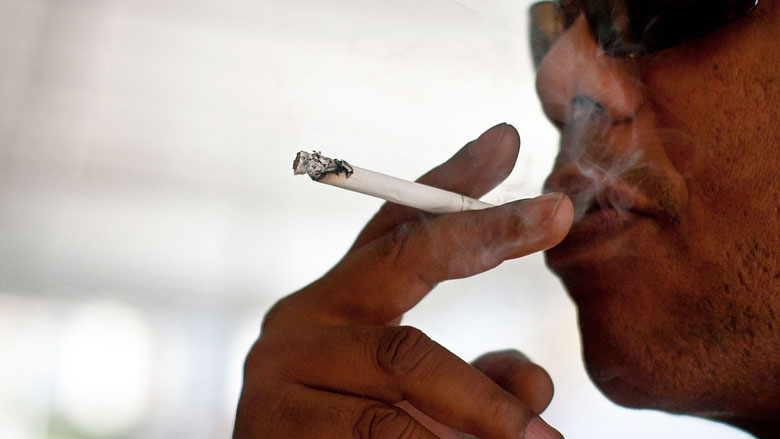Some people have no price limit for their addiction to smoking. But for a large majority, a price hike on their favorite brand of cigarettes would cause them to stop their habit, which in many cases would even save their lives.
According to a recent report of the World Health Organization (WHO), raising tobacco taxes to more than 75% of retail price is among the most cost effective control interventions, especially among the youngest and poorest users.
Not only does it increase the price of the product and consequently discourage its consumption, it also costs governments very little to implement and increases public funds, which could be reinvested in health programs.
According to the WHO, a 10% price increase will reduce overall tobacco use by 4% in high-income countries and by an estimated 5% in middle- and low-income countries.
Some countries have even more encouraging figures, however. In Brazil, tobacco used declined 46% among adults between 1989 and 2010. Half of this decrease is thought to result from increased taxes on cigarettes and other tobacco products.
“Cigarette consumption and its negative impact on health, in social and economic terms, is a global problem that is not simply going to disappear,” says Patricio Marquez, a lead health specialist at the World Bank.
“If we want to avoid being passive spectators to the unbridled growth of this global health threat, political will must be encouraged, together with sustained support from civil society and international organizations,” warns Marquez.
He adds that it is necessary to both act on this mortal threat, which is preventable, and to promote effective, continual action against tobacco use and its addictive properties.
The WHO has made five key recommendations to fight the tobacco epidemic:
- Monitor tobacco use and prevention policies,
- Protect people from tobacco smoke,
- Offer help to quit tobacco use,
- Warn people about the dangers of tobacco, enforce bans on tobacco advertising, promotion and sponsorship, and
- Raise taxes on tobacco.
Even though taxing tobacco at more than 75% of the retail price is among the most successful interventions for controlling tobacco use in the population, few countries around the world have raised tobacco taxes to those levels.
Just 10% of the global population lives in countries with sufficient taxes. In 2014, 11 countries had increased taxes to represent more than 75% of the retail price of a pack of cigarettes, joining the 22 countries that already had equally high taxes in place since 2008. Of the total of 33 countries, Chile is the only Latin American nation to have done so. This means that many countries still have very low taxes on tobacco while others do not tax these products.
A death every six seconds
This is not a minor problem. Tobacco is the leading preventable cause of death, yet it kills someone every six seconds. Additionally, exposure to second-hand smoke is responsible for an estimated 600,000 premature deaths among non-smokers annually.
Worldwide, of the population over age 15, 22% smoke. Despite the significant reduction in the prevalence of smoking worldwide, the real number of smokers has increased sharply over the past three decades as a result of demographic growth. In 2012, there were nearly one billion smokers, as compared with 721 million in 1980.
Nearly 80% of all smokers live in medium- and low-income countries. While Chile and Uruguay lead the list in tobacco use among Latin American women, Argentina and Mexico are among the Latin American countries where tobacco use has significantly declined since 1980, according to data from the University of Washington’s Institute for Health Metrics and Evaluation (HME).
Other measures taken
In Latin America, the counteroffensive is based on a strong tobacco control policy that includes tax measures, prohibiting smoking in public places and increased awareness of the dangers of smoking.
Argentina, Panama and Uruguay are good examples of a strict control of tobacco use whereas Brazil, Chile, Mexico, Panama, Peru, Uruguay and Venezuela use tough warning labels on the effects of smoking. Brazil and Uruguay also are noteworthy for treating tobacco addiction.
However, a pending debt exists in terms of taxing tobacco as a control and prevention measure.
According to Márquez, effective tax systems can make tobacco products inaccessible and represent a crucial tool for addressing the increasing burden of non-communicable diseases, which by 2030 are expected to cause 81% of all deaths in Latin America.

